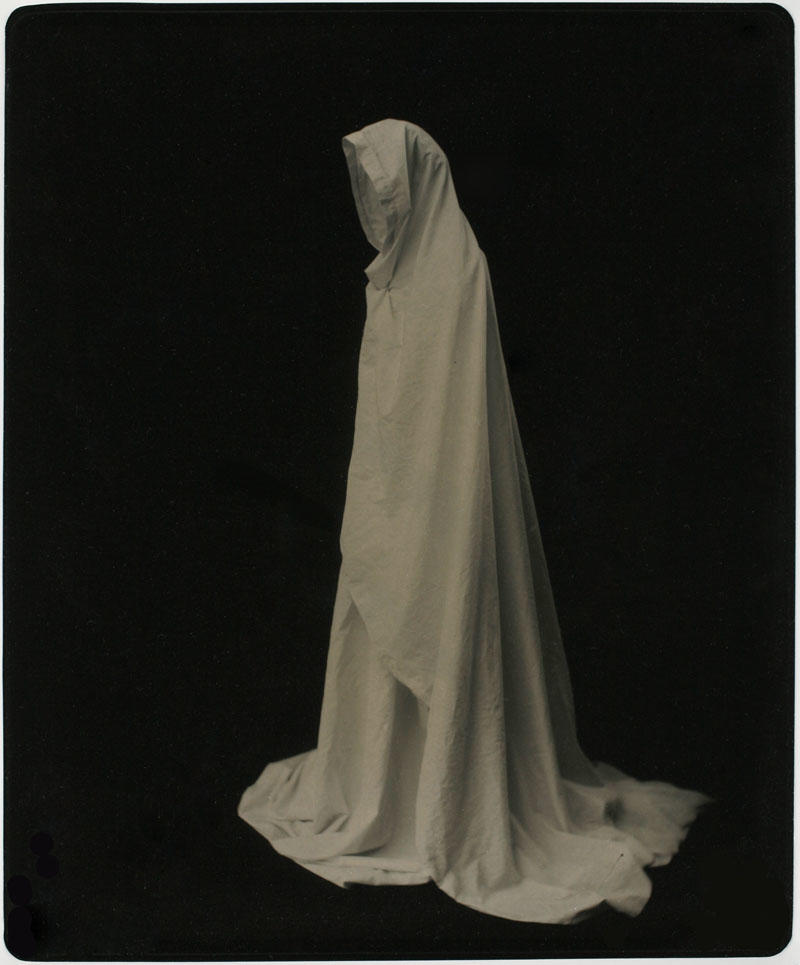White Shroud
-
Ben Cauchi
b.1974

Title
White Shroud
Details
| Production Date | 2006 |
|---|---|
| Collection(s) | Collection Govett-Brewster Art Gallery, New Plymouth. Acquired with assistance from the Govett-Brewster Foundation. |
| Accession Number | 2007/2 |
| Media | Tintype |
| Measurements | Framed: 540 x 475 x 40mm |
About
In White Shroud, a cloaked figure stands motionless before us. Cloth drops from the crest of their head, but no face emerges from the opening in the hood. The garment—a shroud—specifically references a length of cloth used to wrap the body before burial, and informs the popular conception of ghosts as white sheets that haunt the earth. To shroud is to conceal or envelop, to veil what is there—a suitable metaphor for Ben Cauchi's photographic practice, which bends the perceived truthfulness of photography.
Cauchi is an alchemist of sorts, working with ambrotypes and tintypes. This historic medium is derived from the labour-intensive collodion or wet-plate process invented in the mid-nineteenth century. It requires coating a glass plate in an emulsion to create a singular positive image, which can then be enlarged and reproduced. Compared to other methods of the 1850s, wet-plate was fast and produced an impressive tonal variety, evident in the rich variation of the drapery obscuring Cauchi’s spectre.
For contemporary photographers, the collodion process is messy, highly flammable and involves a lot of equipment. The developing process can be fickle, and a dark streak at the foot of the cloth is the only indication of any process-based accident in White Shroud, attesting to Cauchi's mastery of the medium. Not only has he constructed this image in a notoriously tricky medium, but he has captured the subject, which appears to float in front of us, without supports. The shroud hides the presence inside, but also reveals its appearance to us.
Through his work in this medium, with its antique, grainy quality and monochrome palette, Cauchi engages with historic photographic attempts to capture the unseen and occult, calling back to an era when sight was a source of truth. Cauchi manipulates the medium, posing as a conjurer to show us the impossible, and encourages us to further question the validity we associate with imagery.
— Maya Love, 2022
